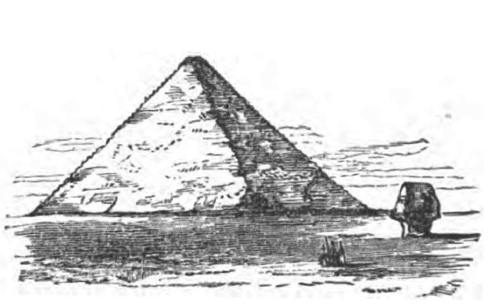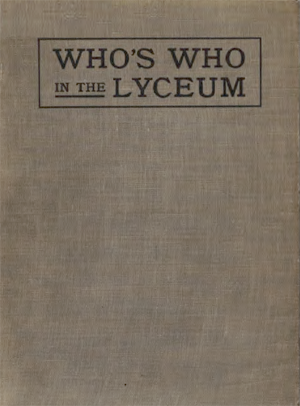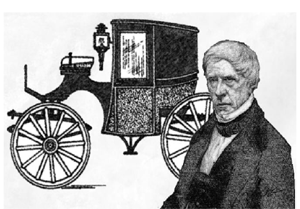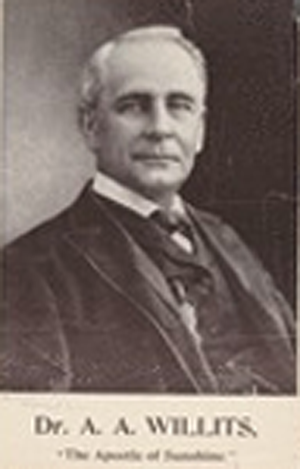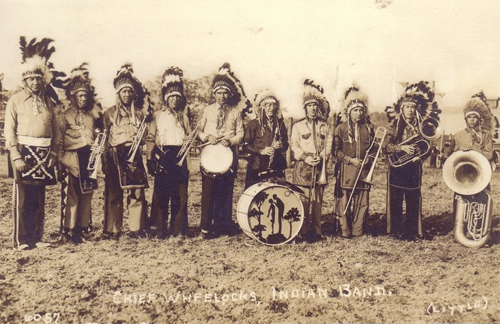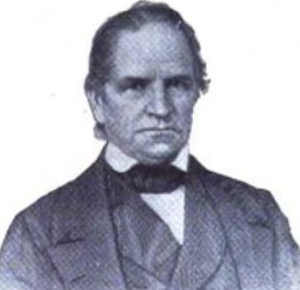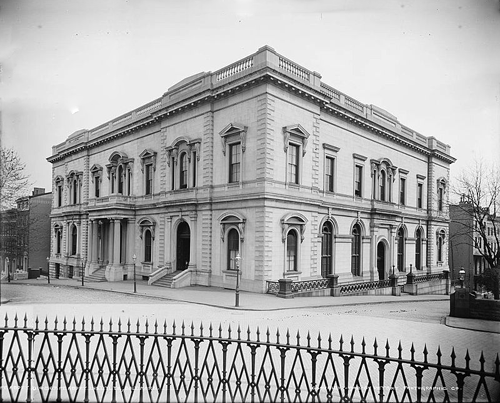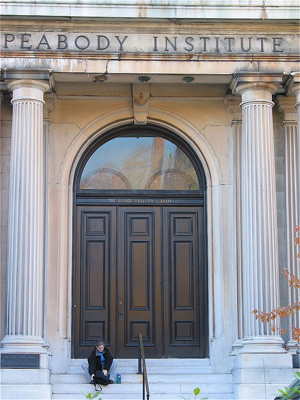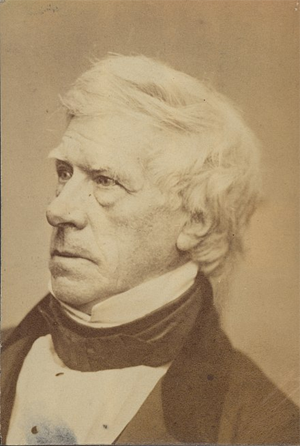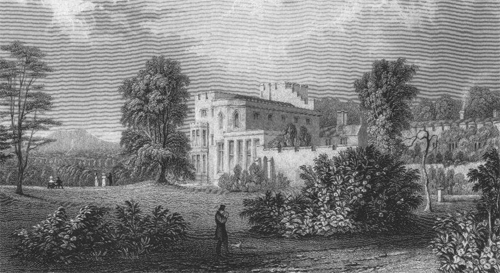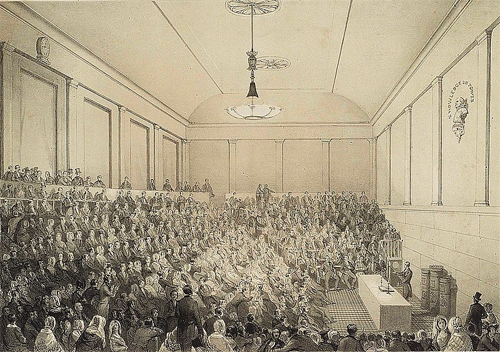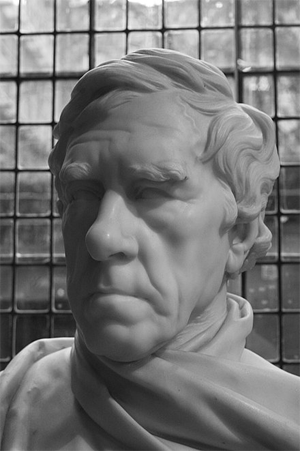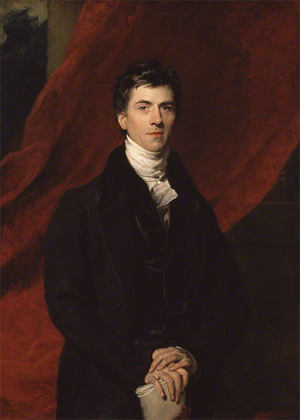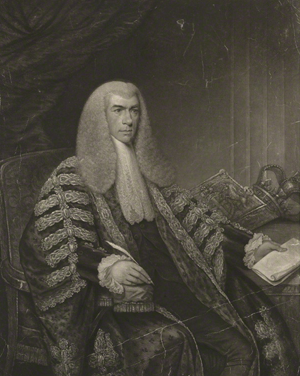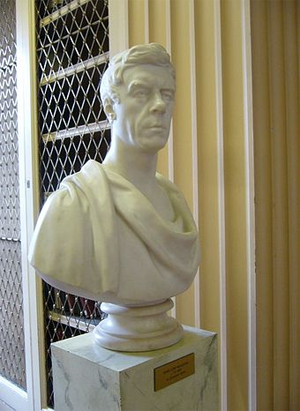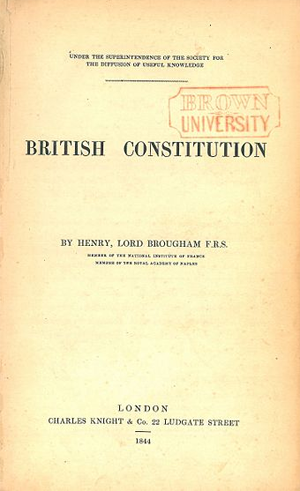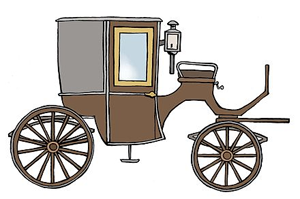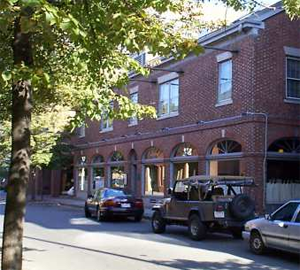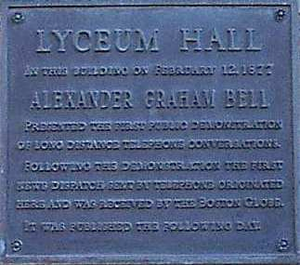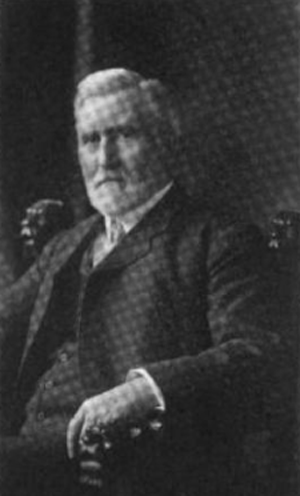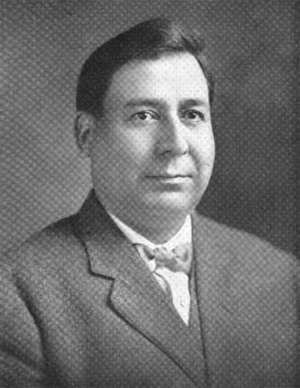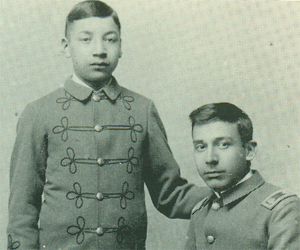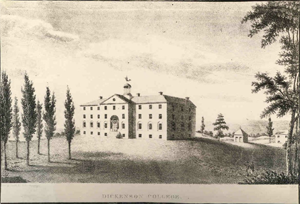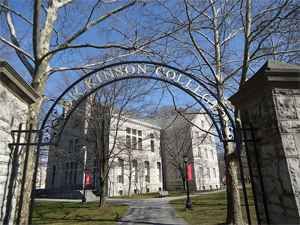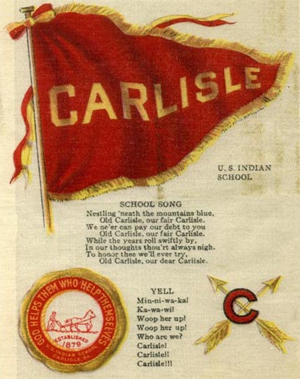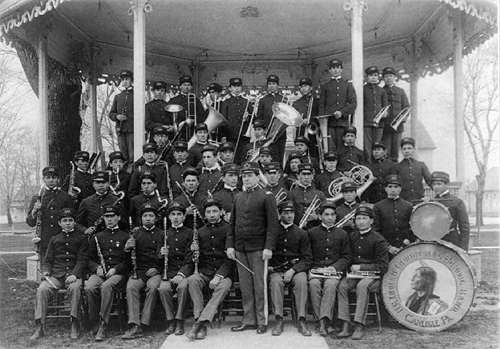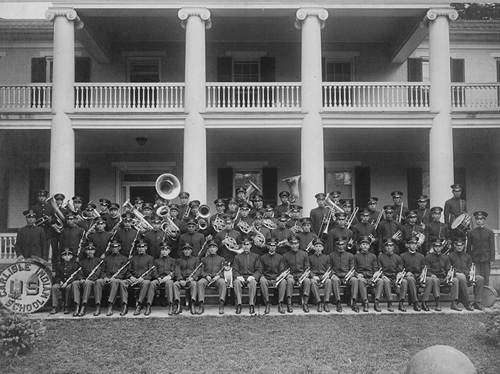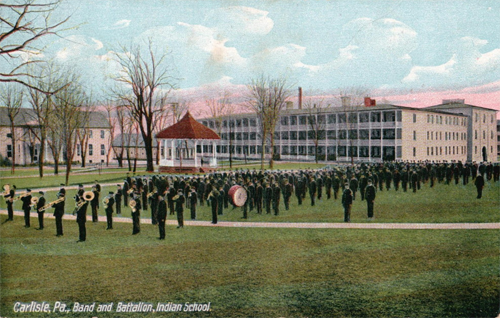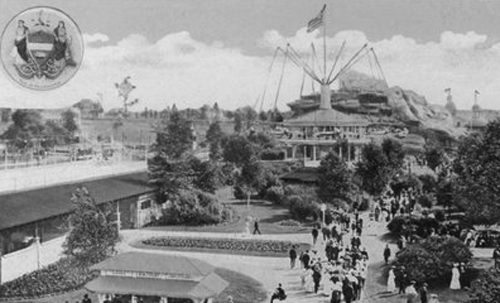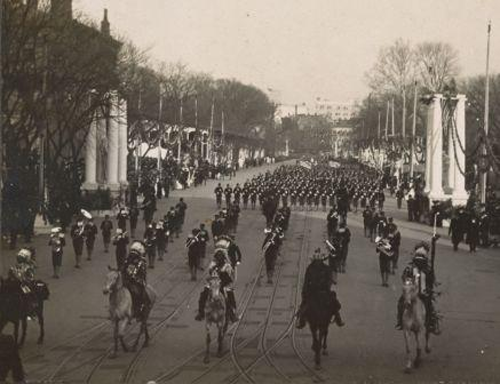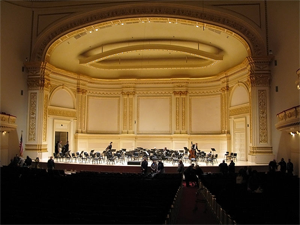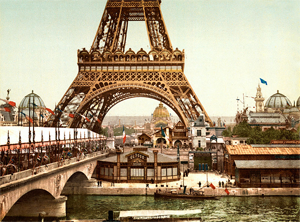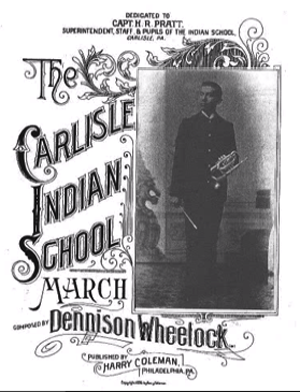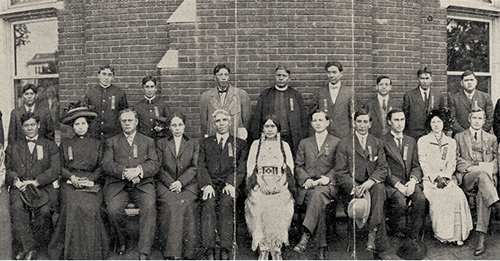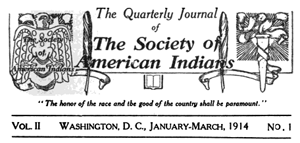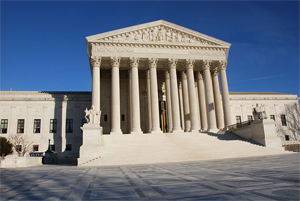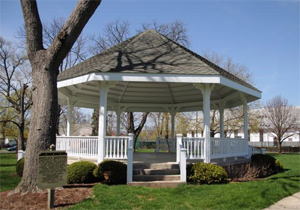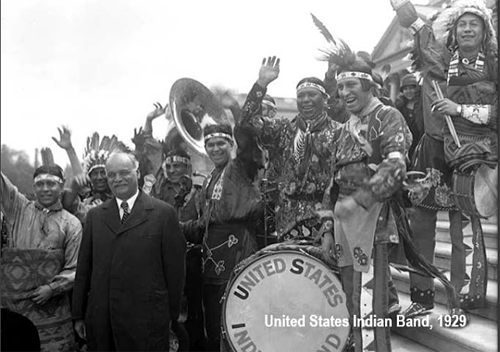by William Wilberforce Juvenal Colville
1884
HERODOTUS, who is popularly styled the Father of History, may indeed be the first great historian who has attempted a systematic and consecutive history of the post-diluvian world; but the history of antediluvian times is still shrouded in such deep gloom, and invested with such transcendent mystery, that very few, until quite recently, have attempted to tell the story of the world before the great and well-nigh universal deluge, reference to which will be found in the histories and mythologies of all peoples.
You are probably all of you aware that the Bible is by no means the most ancient record in existence, and it does not profess to deal in any way particularly with all the differing races or varying sections of mankind. The first chapter of Genesis is a prologue, and the prophet Malachi, an epilogue to the Old Testament, while the Law and the Prophets, and the history of Israel's wars and kings, all deal exclusively with one nation (the Jewish), only telling of other peoples as their history collides with that of Israel. Every nation has its own record, and while records may dispute the palm for antiquity with one another, it is almost universally conceded by students, that the Hebrew bible is not anything like so ancient as the Vedas and other records of the far Orient.
The first chapter of Genesis may or may not be interpreted in accordance with modern facts in astronomy or geology, according as the interpreter construes the narrative. It is in its letter so vague, and deals so entirely in generalities, that nothing can be said to be plainly taught therein, beyond the general declarations that all things were created by God, and that the lower forms of life preceded the higher in their order of appearance on the earth, while man came last of all.
Surely no one can have read this introduction to the Pentateuch, Without remarking upon the saying, God made man in his own image, male and female. The simultaneity of the creation of man and woman must strike every reader very forcibly who pays any heed to what he reads, while the following chapter localizes an Asiatic paradise, as the birthplace of one peculiar and distinct race of human beings, the original progenitors of the House of Israel. With Adam the Adamic race had birth, and this race, distinct from all others, was forbidden to mingle with any other peoples. When Cain slew Abel, and wandered far from home, he found the earth peopled in those parts to which he journeyed, and these, other inhabitants than the descendants of Adam, were undoubtedly the offspring of those men and women, (numbers and place of abode not supplied by Genesis,) whom God created on the sixth day, mentioned in chapter one.
We merely call attention to these biblical statements, because there are not a few among our hearers who are much interested in the case of Genesis v. Geology, and a lecture we recently delivered in this hall, on "Evolution and Involution," called forth many comments, not only from those who heard it, but from persons across the water, who had only seen mention made of it in a few paragraphs in a London newspaper. The editor of the "Banner of Light" (Boston, U.8.A.) commented in his columns upon those paragraphs, and went so far as to say, probably they were erroneously reported, because the statement was made that Genesis and Geology were not irreconcilable. He pointed to the fact of their being two distinct accounts of creation in the first two chapters of Genesis, and styled one the Elohietic and the other the Jehovistic account. Bishop Colenso thought these accounts gave evidence of a double authorship, and that opinion is shared by many students to-day.
It is not our intention to enter into any controversy in this discourse on the authenticity of the first book of Moses, neither shall we at any time tell people to read Genesis if they wish to become acquainted with the facts of geology, or any of the natural sciences, for the Bible is no scientific textbook. Still, there is a moderate and common-sense view of the Bible, which, unfortunately, ill not taken by the. majority of Bible interpreters of the present day, and that is, that though the Bible came into existence in a purely natural manner, as did all other books, it was impossible in the days when it was written for any book to be produced except by the learned, or those who were singularly inspired. The Bible is the result of ancient scholarship and inspiration. It is emphatically a Jewish history written from a Jewish standpoint, chronicling those events which influenced the national life of Israel, and leaving the history of other nations alone, when that history did not run in parallel lines with that of Israel. \Ye think we may fairly assert that the wise men of old, the most learned among the rabbins, for instance, never denied the existence of those scientific facts, known to the Egyptians and embodied in their architecture, but they did not attempt to reveal them to the people under their charge, who, for the most part, were quite unready to receive them. For a curious and interesting dissertation on the Adamic race and its origin, we refer you to the pages of a work, entitled "Genesis," by Allan Kardec, recently translated into English, and obtainable of any dealer in spiritualistic literature in England or abroad. But we must not dwell any longer upon this introduction to our subject, or we shall never be able, if we allow these considerations to divert us, to say anything we wish to say on this occasion, upon that wonderful centre of ancient glory, which fell a prey to the destructive force of the waters nearly 12,000 years from the present time.
A few years since. Ignatius Donnelly, of Minnesota, U.S.A., published a work of thrilling interest, entitled "Atlantis," in which he undertakes to prove that that mysterious island, mentioned by Plato as having lain in the midst of the Atlantic waters, beyond the pillars of Hercules, at the entrance to the Mediterranean Sea, was not a mere fancy of mythology, but a veritable solid reality, as much so as is the Australia of to-day.
What we have already remarked concerning a plurality of races, and all human beings not having sprung from a common forefather, Adam having been the forefather of one race only, is amply borne out by the facts of physiology, which go very far to prove this position beyond question, among students of the natural history of man. The Negro, for instance, with his thick features and woolly hair, has not only these peculiarities to distinguish him. He has a cuticle under the skin, which makes him a negro. Children born from other races, who have not intermingled with negroes, will never have this cuticle, no matter how long they may sojourn in the tropics, or how dark their offspring may become through exposure to the climate. The Malay and the Caucasian are evidently distinct races of mankind, and though they may blend in the future, and all races may at length become one, a common race, to inhabit all the earth, is rather a prediction for the future than a history of the past. But a study of races is fast leading the student to conclude, that there was a closer bond between the eastern and western hemispheres, in very ancient days, than has ever bt>en imagined until very recently, except by a few such remarkable men as Solon, Plato and others, whose knowledge of ancient history and of the occult sciences led them to conclusions based upon actual facts with reference to the pa11t of man on earth, which were impossible to the multitude, whose knowledge and means of obtaining information were necessarily far more limited.
Before the destruction of the Alexandrian library, under the Turks, there existed in Egypt, at Alexandria, a collection of MSS., probably the finest the world has ever known, and in these books, accessible only to the learned, intelligible only to the very few, was contained the history of the earth from the earliest times; and the history of Egypt not only 6,000 or 7,000 years ago, which is now being unearthed by modern students, but the history of Egypt contemporaneous with that of Atlantis, pre-historic America, pre-historic Australia, and pre-historic South Africa and parts of Asia.
We must now refer you to a fact in the history of the earth, viz., a change in its polar axis, gradually brought about through long periods of time, and reaching a culmination at the close of every grand cycle of over 25,000 years. These vast periods of time, during which mighty changes and upheavals are outwrought, were computed by the Ancients with the same accuracy as that which attends your determining the length of the solar year, which you know to be between 365 and 366 days. The grand year of the Pleiades occupies nearly 26,000 years of earthly time, during which the sun accomplishes its journey through the twelve zodiacal signs. During this vast period, the sun's rays strike the earth vertically at different degrees of latitude, and while there is always an equator, and while there are always poles, and these poles are each 90 degrees from the equator, and while the equatorial line is always the centre of the earth, and that spot upon the earth's surface where day and night are of equal length all the year round, the equator changes place, though so slowly as to be imperceptible to all save special observers.
During half the cycle, the south pole advances and the north pole retreats; during -the other half, the south pole retreats and the north advances. At the present--time the north pole is slowly, but surely, creeping toward you, while the south pole is retreating. '!'he equator is travelling southward, and, therefore, in northern latitudes the climate is steadily becoming more and more inhospitable. Certain sciolists deny this. They had better save their own reputations for scientific knowledge, by accounting for facts now transpiring which prove the truthfulness of this theory, before they deny the only natural and rational explanation of phenomena transpiring under the eyes of every one, by refusing to admit the truthfulness of any theory not sufficiently small to be included in their theories, which stand them in the stead of fact.
No one looking at a map of the world, can fail to be struck with the immense preponderance of land north of the equator, and of water south of it; and no one can see the name "Greenland" applied to a desolate patch of country in the northern part of North America, without wishing to know the origin of the misnomer. Greenland was once a fertile country; while all the northern part of Asia, now called Siberia, was once a fruitful and hospitable region. The Persian records, the Zendavesta, inform you that once there was an earthly paradise, where now there are but fields of ice, and that the tradition of a forfeited earthly paradise in Asia, owes its historical value to this circumstance. Certain it is that in the northern hemisphere the climate of many lands once salubrious, is now becoming more and more inhospitable, while the heat is becoming more tempered in southern latitudes, and this because of the changing aspect of the earth to the sun.
As it would require a discourse of considerable length to fully explain this problem in science, and we have no time to deal with it now, we must refer you to the studies of specialists in this direction for further information; contenting ourselves for the present, with giving you a vague outline of the world as it was prior to the culmination of that last grand cycle of time, which must have culminated fully 11,000 years ago, the present era now closing being the fifth dispensation in the present grand cycle of time, the new era now commencing being the sixth epoch, and that during which one-half the world will attain to a civilization matchless in its importance and results.
The new era now commencing marks that period which will give to the northern half of the globe, a power and supremacy unknown save to the most privileged among the Ancients, who were however not the recipients of the boons of culture and inspiration on so large a scale as the Anglo-Saxon and allied nations will be during the coming age, which will witness in the eastern and western hemispheres conjointly, an attainment far transcending aught that you anticipate, unless you give credence to Homeric tales, and stories of Arabian enchanters, who have filled the brain of age and youth alike with glowing pictures of a distant past, in which gods and goddesses mingled freely among mortals, and the occult sciences were something more than idle dreams or fanciful imaginings.
The modern world still believes in a golden age departed, while it also looks for one to come. Milton was not a Calvinist when he wrote his matchless verse, and sang of earthly paradises long since destroyed. Tinctured with the Puritanism which filled the very air he breathed, he doubtless was, but he echoed Hesiod anti Homer, he pictured the constant strivings of deities and devils, and personified the forces of regeneration and decay in his inspired songs. To him "Paradise Lost" was a sad truth, but "Paradise Regained" was the yet truer dream. Like all great poets he was a thorough optimist, and was sorrowful and astonished at the pessimism of the world, which criticised his verse but could not understand his prophecies. The critics admired his story of a lost Eden, and greatly preferred it to his glowing prophecy of a future golden age. He lived more in the past than in the future when he wrote the "Paradise Lost," he lived in the future when he wrote his "Paradise Regained"; and he loved it best, as all true poets must, for he is not a poet but a misanthrope who sees only death. The true poet sees beyond death to the New Jerusalem, and across the Jordan, which whelms all earthly treasures, traces, capped with living light, the glorious summits of the mountains of the Celestial City.
There is something inexpressibly sad in gazing upon a ruin, if you must feel that all the life and beauty which once woke it into birth, have gone out into the rayless night of an eternal oblivion. A buried city rising up from among piles of rubbish, the accumulations of centuries, is sad beyond comparison, if you cannot realize the truth of immortality. But when the very air around you is peopled with the impalpable forms of the departed,-when you can wander through the desolated halls and ruined temples, where once art, science, and religion adorned themselves in their most beautiful array, and summoned multitudes from far and near to witness their imperial triumphs; and wandering, musing upon these dead and gone glories, talk with the emancipated spirits of those who once woke those solitudes into every conceivable form of loveliness and grace,-you are no more despondent, for you realize in the ethereal hosts around you the victor spirits who. having done with earth embodiment!!, are now rejoicing in diviner worlds, reaping the fruits of their former labours, and gazing fondly on the ruined school-houses where once they gained their education; but knowing all the while that they shall each one be rebuilt, and employed by future generations for the advancement of spirits then requiring education like unto that which these ascended ones have long since gained. They can admire the dignity and utility of that law which, while it ordains the destruction of naught, makes provision that all things serve some useful end, so that when they are no longer needed in some particular form they have once assumed, they are thrust back again into that void or chaos, whence they sprang in former ages to serve the needs of Spirit, there to lie seemingly dormant and useless, but all the while undergoing marvellous transformations, until they shall be called back again to witness new scenes of labour on the part of mind, and be in some yet undreamed-of age the very tools wherewith immortal spirits, awhile embodied in material clay, shall develop those latent energies, which only conflict with lower phases of existence can ever adequately express.
The old Jewish Sabbatic law, as it bore on the question of land, is a striking illustration in minor degree of that great law of nature which renders certain lands peculiarly fruitful for a period, and then compels them to lie waste for needed purposes of recuperation through rest. The sabbath was intended not to flatter God, but to benefit his children. The land was to be cultivated six years, and then lie fallow during the seventh, that it might again be fertilized and bear all that was needed to support life, and keep the nation in a perpetual condition of active prosperity.
Over-production is always the precursor of want and distress. Poor wages, little work, and general dissatisfaction always follow in the train of an overstepment of the law of prudence in matters pertaining to labour. Work yourselves incessantly without rest, year in and year out, and you disease your bodies till they are unfit for further exertion, or you paralyze your brains and end your days in a madhouse. or as a drivelling idiot, harmless, indeed, but utterly incapable of enjoying any of the blessings which would have accrued to you had you taken a less feverish and more common-sense view of life, and the number of hours that should rightfully be devoted either to physical or mental labour.
Not only does man need periodic rest, but all sentient creatures need it, and they suffer accutely when deprived of it; and not only do all living creatures need it, but the earth itself needs it, for whenever a land has been peculiarly prolific, and has been the scene of unparalleled achievements, the time surely comes when it becomes unfit any longer to bear the strain of such high pressure, and enters upon a state of senility, and ultimately apparent death. Having passed its meridian, it begins slowly yet surely to decline the hill which it once ascended.
But what is one's loss is another's gain. 'When the sun shines brightest in England, through the long summer days, the winter reigns at the Antipodes. ·when it is high noon in one hemisphere it is midnight in another. There is never a withdrawal of light and heat from one portion of the globe, without a conference of the same upon other sections of the world. It is always summer somewhere, and it is a beautiful thought, entertained by many optimistic philosophers, and in no sense disputed by the facts revealed by strictest physical research, that every summer is in some sense more· beautiful than its predecessor, that with every succeeding year the world ·becomes more widely adapted to human life in its highest forms, and that the ultimation of the world will most probably be something far different from the catastrophe predicted by theology. For instead of a final conflagration, while yet it is inhabited, the hope of the true philosopher, founded upon reason, observation, intuition, and spiritual revelation alike, is that the time will come when every form of life will be perfected on earth, every noxious and ravenous form of life outgrown, and where now the deadly upas tree sheds its fatal shade, the healthful fruit will hang ripe and rich on the bending boughs of the trees, which will then be in its place. Where now nations are embroiled in perpetual conflict peace will reign supreme, and where now life is felt a burden almost too heavy to be borne, want, wretchedness and despair will have taken their final flight, and the earth will have reached its meridian splendour, and bask in 'the noonday-glory of its long-promised golden day.
The world ill still young. It is only a growing child; it is still in its adolescent period; and has not yet settled itself to enjoy a maturity of peace and prosperity, of which there is ever promise and indication in the nature of the earth itself, despite the wailings of the pessimism which to-day is possible because optimism is true, rather than from any other reason. The general cry of to-day is : the world is getting hopelessly bad; things are going from bad to worse; immoralities and crimes are on the increase; and we shall soon be hurried into perdition. The storm-clouds of God's righteous anger are gathering thick about our heads, and unless we instantly repent we shall all miserably perish. Such lamentation as this shows nothing more than a quickened conscience, a yearning for something higher than is yet attained; while the voice of conscience ever spurs us on to nobler achievements, by making us discontented with our present, leading us out of evil by impressing upon our minds the hideousness and danger of all evil courses.
England is not now what Atlantis was in the palmiest days of her most brilliant and glorious career. She is not in specific directions even what Greece and Rome, Egypt and India, were in their brightest and now far-distant days. But we seriously doubt if there ever was a time in the history of the earth, no matter how old the computations of geologists may cause it to appear, when there was a prospect of so rich a harvest of literature, science, religion and the arts as there is in the modern Europe and the modern America, with which you are all more or less familiar.
No student of ancient history can fail to see in the significant signs of these present times, a nearing recapitulation of events which transpired in the dim distance of pre-historic ages. North of the Equator is now the scene of the greatest mental and physical achievements of the race, while there are colonies of English-speaking people at Cape Colony, in Australia and Australasia. Still, the population increases slowly there in proportion to the increase here, and progress towards the cultivation of the entire ground, nominally possessed by the descendants of European races, is still very slow.
Formerly Australia was joined on to the southern parts of Africa, and the island of Atlantis was the bridge between the two hemispheres, so that by means of Atlantis a constant system of communication was kept up between Asia, Africa and the southern part of Europe on the one hand, and the American continent on the other. The northern part of the modern world was, in the days of Atlantis, buried beneath the waves as the waters now cover Atlantis and many a land and fruitful island connected with her, prior to the. time of their being swallowed by the ocean. When Atlantis sank, then northern climes arose from their long sleep beneath the waves, for whenever one part of the world becomes a prey to the waters, other lands are released, for the sea never encroaches in one place without receding in another, or recedes somewhere without encroaching somewhere else. But the days will come when the earth has reached the zenith of its perfection, when literally as well as figuratively there will be no more sea, i.e., there will no longer be vast continents of water accompanied by vast deserts of sand elsewhere. Land and water will be equally divided. Land will all be watered and therefore all fruitful, while the waters will be broken up into many rivers and inland seas, lakes, brooks, and running streams; and the ocean, which is only a barrier between land and land, will disappear.
It is computed that now the waters cover about two-thirds of the surface of the globe. Tradition says once they. covered all the land, and dry land appeared so soon as the waters subsided. They will continue to subside more and more, until they occupy only one-half the territory of the earth; and in that day, when land and water are ,equally divided on the globe, both hemispheres will be civilized and prosperous together, and from pole to pole the earth will not contain one barren or unfruitful spot, neither will it sustain a single poisonous plant, noxious reptile, savage beast, nor brutal man.
Whenever a section of the earth attains to its temporary zenith, that section of the world is the scene of a perfect state of society, so far as perfection can obtain on earth, and it is undoubtedly from this perfection of old-world centres of prosperity, that the poets and philosophers, the fanciful historians and compilers of mythologies, have gathered the data from which they have been enabled to erect that stupendous pile of mythologic lore, which is to-day the wonder and the pride of every student of the classics, the poets, and the great thinkers of every ancient clime and period.
As you have no doubt all heard of Plato's faith in Atlantis, though comparatively few have probably read his story of that mysterious land, it may not be uninteresting to this audience if we briefly summarize the information we have gathered from various sources, Platonic and other, concerning the physical, social, political and religious condition of that far-famed and highly-blest land.
Atlantis, as we have already told you, lay between the shores of the eastern and western world, from which it was divided by narrow and easily-navigable waters; the art of navigation being very ancient, and the Atlantians being well versed not only in this but indeed in all the arts and sciences, ignorantly supposed to be modern, when they are so ancient no scholar can determine when they originated; while so great a man as the Astronomer Royal of Scotland (Professor Piazzi Smyth) supposes them to have originated in very early times, by direct revelation from heaven to Melchisedek, or whoever may have been the mystic architect and designer of the Great Egyptian Pyramid. But if the Great Pyramid was not erected till 2,170 B.C., it is comparatively speaking a new building, and all that can with any show of reason be assumed concerning the date of its erection is, that it could not possibly have been later than that time. The astronomical reasons for assigning that date as the time of its completion, can also be brought forward in support of its erection at a much earlier time, and many who do not take the real antediluvian world into consideration at all, refer that celebrated pile, justly called a miracle in stone, to 3,500 or 3,700 B.C.
Recent excavations in Central America have led to disclosures concerning the monumental remains there, which caused the publication in a London paper some years ago, of the fact of there having been discovered at Pueblo, in New Mexico, a pyramid of much larger dimensions than that of Gizeh, in Egypt; the Mexican pyramid covering over forty acres of ground, while the Egyptian structure covers not more than about thirteen-and-a-half. The Mexican pyramid, scholars decided, must have been in existence fully 7,000 years, and how much longer no one seems prepared to decide. The realm of discovery in the Western world is even richer for future generations than in the East, as it marks a period in history completely ignored by Herodotus, and all historians since his time, and opens up a marvellous field of exploration to all who care to enquire systematically into the origin and blending of races, religions and languages.
Some very strong reasons for belief in the reality of Atlantis, we will now adduce, before giving you, as the climax of our recital, a brief sketch of the internal condition of Atlantis, and the state of her people spiritually as well as materially.
We have already noted the mythologic argument; and allow us here a word concerning myths. They are invariably fanciful histories, as well as speculations, concerning the contending forces of good and ill. Astronomical myths are very frequently alluded to at present, and many if not all which can be legitimately included in the astronomical category, had for their object. the preservation and transmission of astronomical facts, which were kept secrets among the learned. Socrates drew down upon him the ire of the Athenian monopolists, when he endeavoured to unveil the Mythos, as Galileo, Bruno, Copernicus, Columbus and many others drew down upon them the anathemas of Christian bigots, because they dispelled the Ptolemaic illusion which kept the masses in ignorance, though there never was a time when secret Orders, possessing knowledge on these subjects, did not exist.
Historical myths are of another class, but not of a widely differing one, for in order to veil yet more carefully the esoteric meaning from the "vulgar," and preserve it for the initiated only, astronomical facts were fancifully represented, and thrown round the heroes and heroines of antiquity, when they were made to pose as gods and goddesses in the temples and traditions of the classic lands. All the nations whose territory borders upon the Hellenic seas, are peculiarly rich in mythologic lore, and a modern examination of this goes very far to prove the fact of there being personal histories behind these wild, fantastic tales. The gods and goddesses of old were not always spirits who communed with seers and sybils in the mystic shades and mountain fastnesses of the classic world. They were quite as often the great and mighty potentates and priests, the prophets, seers, and judges of a by-gone age, around whose memories countless legends had gathered, as Strauss, and Kant, and other German authors of the life of Christ, say that through the centuries since his time. there has been a gradual development of mythology around Jesus as a centre.
The celebrated myth, Prometheus, is now considered by many savans to be a fanciful biography of Pythagoras, the celebrated sage of Samoa, and so mystic has become the record of the life of this great man, that it is quite as difficult to clearly prove his personal existence to-day, as it is to prove that of Jesus of Nazareth, simply by reference to contemporaneous history. If the mythical personages around whose names such weird, awful, and beautiful legends have gathered, were really the personal dwellers on some long-lost island, the princes in some great monarchies, long since defunct, the presidents of some glorious republics, after which the modern world can only, as yet, feebly copy,-how easy it is to read between the lines the history of the career of religious ideas, and see how intimately associated with Theism, and how subordinate to it, has been that universal tendency to a belief in divine incarnations, and all the countless divinities of Polytheistic systems; while above all, in solitary grandeur, as one superb mountain towering over every neighbouring hillock, and making them appear but ant-hills by its side, has been the sublime and unquenchable faith in one only Supreme Being. whom all nations have adored even though afar off, and have in some manner worshipped, even though, ofttimes, very ignorantly.
Paul at Ephesus, seeing an altar to the Unknown God, and saying to the citizens- "Whom ye ignorantly worship, him declare I unto you," reminded these so-called Pagans that their own poets had always taught them of one Deity, infinitely beyond all lesser lords, whose offspring we all are. Judaism, rigidly monotheistic though it is and ever has been, has never denied that there are many gods, but only one, Jehovah, to whom all gods must bow. These gods of the nations David did not ignore. He mentions them constantly in his Psalms, but he styles that idolatry, which gives to the creature the homage due to the Eternal only, and denounces the setting up of idols in the temple dedicated to the only Infinite and Holy One, whose name is Jahveh, he who ever was, now is, and ever will be.
A perusal of Ignatius Donnelly's work, which we mentioned with approval at the outset of our lecture, will furnish the reading public with many important facts concerning Atlantis~ which are extremely interesting and especially pertinent to our subject. A reviewer, mentioning the fact of Egyptian navigators being sent out in the reign of Pharaoh N echo, to explore the seas surrounding Africa, tells of their having, after sailing for some considerable distance, found the sun north of them. They were doubted in their day, as all discoverers ever were and always will be by the ignorant, for ignorance engenders doubt, and nothing but knowledge can supplant it, unless it be unreasoning belief, blind gullibility, than which doubt is far preferable. To-day these men, who found the sun north of them when journeying southward from Egypt, can only be looked upon as discoverers who antedated Vasco de Gama, the reputed finder of the Cape of Good Hope. This man was a discoverer relatively. The knowledge of the Cape of Good Hope was lost to the people with whom he mingled, but we firmly believe that both he, Vespucci, and Columbus were in possession of some secret history of the olden world, not accessible to the multitude, when they set forth on their long and perilous voyages in ill-manned ships, to find those mystic lands which lay beyond those dreaded seas, where superstition, ignorance and priestcraft had invented devils to act as scare-crows to drive off inquiring minds from the fields of corn and fruit, which the ecclesiastics preferred to claim as theirs and theirs only.
The fact of the existence of Atlantis as a centre of civilization, and a great seat of commerce between the eastern and western hemispheres, can alone satisfactorily account for the wonderful resemblance between the extant traces of antique civilizations on both sides of the world. It will, moreover, unveil the mystery of the Mound Builders, those mysterious people to whom science has paid of late no inconsiderable amount of attention. It will explain the origin of the hieroglyphics in the far-famed cave of Elephanta, and will throw an immense amount of light upon the origin of the North American Indians, as well as upon that of the Aborigines of Australia.
The American Indians are by no means the debased people many think them to be. Those who know them truly can never call them rude barbarians. Of late they have decreased in numbers and increased in barbarity, and why? but because the American Government, that of the United States, has treated them meanly and dishonourably. They are called by every harsh name, because they fight with spears and tomahawks against the cruel aggressors, who, calling themselves civilized and Christian, think it no shame to destroy mercilessly the Indian's wigwam, and thrust him forth without food or shelter to die by the wayside, while the march of civilization tramples him under its iron heel, and calls such brutality and injustice the way of God and the march of progress. The Canadian Government, which has been far kinder and juster to the Indians than has been that of the United States, has avowedly had much less trouble with them. The true, manly, independent Yankee, a lover of freedom and a respecter of the rights of others, would never oppress the Indian. The kinsmen of Garrison, Wendell Phillips, Longfellow, Emerson, Parker, and a host of worthies time forbids us to mention now, are always protesting against atrocities committed by stronger peoples to subject weaker races to themselves, and then exterminate them. The enlightened, liberal, loyal American Press has never sanctioned outrages or any depredation committed upon the Indian reservations; but the mere money-grubber, the mere fortune-hunter has ever boasted of his superiority to the race on whose every right he has mercilessly trampled, and pointed to those whom he has cruelly oppressed, as being unfit to live. But are tribes necessarily barbarians because they will not lie down and be crushed out of existence without making a desperate effort to defend themselves and those they hold most dear?
Many Indian tribes are characterized by their intelligence, refinement, and spirituality; notably on the Pacific slope are there tribes of Indians who boast an illustrious pedigree, and are the direct descendants of once powerful races, whose territory embraced Mexico, Peru, and indeed all the region constituting the Central American territory. These races were in constant communion with the Eastern world, by means of Atlantis, and the very striking resemblance, existing palpably to all archaeologists, between the remains of Oriental and Occidental civilizations of days gone by, prove beyond a peradventure, that there must have been a bond of union between the " old and new" worlds, such as Atlantis could alone have afforded.
The traditions of the Indians are in many instances evidences that they were once in communion with Egypt and other Oriental climes. You may say that their faith in a Great Spirit, and in the conscious existence of the human spirit after the death of the body, and in rewards and punishments in the hereafter, they simply share with all tribes who can boast any civilization at all. But the religious resemblance by no means ends with these fundamental generalities. Many striking resemblances can be traced, in instances so eminently particular, that identity of origin is very powerfully established. For instance, Volney says, "In the Greeks of Homer I find the customs, discourses and manners of the Iroquois, Delawares and Miamis" (Indian tribes). He further says, the tragedies of Sophocles and Euripides paint almost literally the sentiments of the red men (Indians) respecting "necessity, fatality, the miseries of human life, and the rigours of blind destiny."
The Oneidas (another tribe of Indians) claim descent from a stone, and did not the Greeks trace their origin to the stones of Deucalion? The snake locks of Medusa are represented in the snake locks of an ancient hero of the Iroquois. The translation of men to heaven bodily is a feature of the American Indian as well as of the Hindoo mythology. Longfellow tells us of "Hiawatha" rising to heaven and vanishing from sight, amidst sweet music. These admissions prove no doubt more than orthodox Jews or Christians wish to see proved, for while they point to a far-off origin of Indian and Atlantian, Greek and Hindoo Myths, they treat the Old and New Testaments as only two out of an immense collection of records, all couched in similar language, and all expressive of the oneness of symbolism common to the pre-historic as well as to the classic world.
If time permitted we would gladly pursue our theme much further, as we hope to do in subsequent discourses at no distant date, but though we have said but little on this fascinating branch of our subject, we venture to believe we have said enough to let you see that the story of Atlantis is founded on something far more solid than the phantasmagoria which many persons consider stands as a wild and fanciful legend, in the stead of any actual historic fact.
Another class of evidences are purely physical, and to these we can now allude but for a moment; but we should not be doing anything like justice to our theme did we fail to appeal to the ocean itself, to confirm the assertions of Solon, Plato. and the ancient seers at large, who wrote so eloquently and instructively of this strange, buried land.
Deep-sea soundings, recently made by ships of various nations, conspicuous among which were the British ship, "Challenger," and the U.S. vessel, "Dolphin," have gone very far to sustain our conclusions, by discovering in the bed of the ocean, immense deposits of lava and volcanic debris, extending over thousands of miles of what evidently once was land. The peaks of the Azores are exactly in the spot where Plato located Atlantis, and Solon, who had travelled in Egypt, and possessed himself of much information while there, soon grew into perfect accord with the learned there, who contended that popular histories only touched upon very recent events compared with those which were amply chronicled in Egypt in Solon's day.
Solon's opinion was, that 9,000 years had elapsed then since the sinking of Atlantis, and Solon lived about 2,300 years ago. Add these numbers, and you have something over 11,000 years. We have already referred you to the duration of the Grand Cycle, as a period extending between 25,000 and 26,000 years, and have told you that this period is divided into 12 almost equal portions, called eras, epochs, or dispensations, each one occupying about 2,150 years or thereabouts. We are now just at the dawn of the sixth division of the present Cycle, thus, multiplying 2,150 by 5, we get 10,750 years, and allowing for the fact that numbers in these cases have only an approximate accuracy, we find the testimony of the Grecian sages agreeing perfectly with the events of today, spiritually interpreted.
How account for the story of a universal deluge, without giving heed to the story of Atlantis? Noah's flood, of 4,000 years ago, was a very local matter, while every record called sacred on the earth, from those of Hermes and the Vedas to those of Scandinavia, all contain a narrative of a universal flood. This tradition of the deluge is scientifically explained by that revelation which the bed of the sea is now making to the world, concerning the once populous and fruitful lands it now covers, while, east and west, stones are literally crying out in the revelations given to all who study them, by those marvellous monumental remains which contain histories, far more glowing and imperishably written, of nations long since gone out of earthly existence, than are to be found in any parchment scrolls or printed records.
In closing we can only add, that Lord Lytton's "Coming Race" can well be read as a reminiscence of the past, as well as a dream and prophecy of the future. Time was when the powerful Atlantian race was as glorious as Lytton's Vril-ya. Aerial navigation, the use of wings as mechanical appendages. were among their triumphs relating to the comforts and amenities of civilized life, while during the later and most glorious portion of their career, they had outgrown warfare, and had triumphed over those innumerable stumbling-blocks in the way of a nation's progress, which are yet perplexing the statesmen of every land beneath the sun.
Their religion was a simple confidence in the All-Good. Their rites and ceremonies were those from which the magnificent conceptions and glowing imagery of the early Egyptians sprang. They were the originators of those Schools of the Prophets, of which the Ancients speak so much, while having attained to an almost inconceivable spiritual altitude, their spiritual faculties became so alive to the realities of the realm of spirit, that their land was verily the abode of gods. Theirs was the original of Arcadia, Olympia, Hesperides, and every charming resort of divinities pictured to you in Homeric verse and Platonic philosophy. Spirit communion, purified from sensuous dross and devoted to pure and benevolent ends, revealed to them the certainties of life immortal; while education was the substitute for punishment, moral suasion and intellectual might were in the stead of carnal weapons of defence, while their land, charmingly situated, perfectly watered, thoroughly under cultivation, yielding every fruit of the earth man could desire, in rich profusion; surrounded by easily-navigable seas, across which access to other lands was constant, conspired to render the Atlantians the favoured race, because the most moral, intellectual and healthful. Disease, poverty, crime and painful death became almost outgrown, ere the hour drew nigh for the land to become the ocean's prey, and having flowered out into such luxuriant beauty, to decline suddenly when its inhabitants were prepared to quit the earth, and their spirits to be transported to another planet. A few were saved from the fate which overtook their land. These mingled with the life of both hemispheres, some escaping to America, and some to Asia. From their descendants have modern races sprung.
When, in 2,000 years from now, the belt of civilization again puts a girdle round the earth, in more than name or pretence, a greater race, a larger one, covering wider territory than the Atlantian, will have been formed, and the new millennium will be more glorious than the Golden Age, so deeply mourned, so soon to be recovered and transcended, when the paradise to be gained will far transcend in glory the paradise the old world lost.
IMPROMPTU POEM.
THE REAL AND THE IDEAL.
SURELY, things Ideal after all are Real!
And things the most Ideal are most truly Real,
Because the Soul discovers the Ideal,
And purblind sense deals with the earthly Real.
The poor, worn body, In th' embrace of death,--
This, mortals ever seem to think the Real;
The happy Spirit, fled from scenes or dust,
To them Is only fancy, the Ideal!
The Artist paints a glorious sunrise,
A lovely sunset, showing all the scone
Where earth and heaven meet in sweet accord,
As though estrangement they had never seen.
The colours, true to life, which greet his eye,
He puts upon the canvas In his joy;
The splendours all around him he reveals,
And men declare 'tis but Ideal employ!
The Poet sings a song of fadeless love,
Th' undying fealty of a loving heart,
And tells a tale of constancy divine,
In which no shade of doubt can bear a part.
Prosaic writers say, It Is not true;
The prosy reader says, Can never be
Such deep devotion; for such loyal love,
Say men, the world of mortals ne'er can see.
The Christ of Gospels, and of painter's art,
Who loses life and all the world counts dear,
To save his brethren from sin's bitter fruit,
Is but a myth, for surely none so clear,
So free from stain, so noble and so great,
Could ever dwell upon the shores of time:
Men cannot see, that what Is great and best,
Is true forever, e'en on earthly clime.
The sputtering candle, and the broken mug,
The ragged urchin gamb'ling In the street;
The haggard face, the listless Indolence,
Which every passer-by must often meet;
The fish, the worm, the fire, the grate, the cat,--
These things are true to nature, they are Real;
But, verily, the commonplace of life
Is not so real as the great Ideal.
These little things, these phantoms of an hour,
Will be unreal to-morrow, fled and gone;
While all the visions of the starry night,
The Artist saw, will still be shimmering on;
The Poet's love, the true historic Christ,
Will be alive when baubles are no more,
And every high ambition of the soul,
Will live and triumph when all earth Is o'er.
That Is the Real which shall longest live,
The Ideal world Is the most real far;
The sun, the moon, the mountains towering high,
The peaceful valleys, and each blazing star,
High hopes, pure loves, deep sentiments most wise,
Ardent ambitions, and the Eternal State,
Man's immortality,-- these will remain;
Though all things petty soon shall meet their fate,
And be dissolved In elemental strife,
All that Is great, and beautiful, and true,
Must live and reign, Co-eval with Its God,
And every day appear In some sweet fashion new,
Though seemingly It dies; for what Is death
But that transition which doth free the soul,
And lets the ideal nature freely fly,
Until the Spirit doth all earth control.
O Poet! Artist! Singer! Sculptor! Scribe!
Though men deride you for your loftiest dreams;
Go, tell us more of Heaven's immortal dower;
Go, tell the world how great to you It seems,
This mystic universe of stars and suns.
And while the world, in market-place and stall,
Will barter chattels for a mite of bread,
Go ye, and summon angels, men, to all
Proclaim the fact, while ages roll along,
The Ideal world doth the most Real be,
Because it Is the region of that Cause,
But whose effects on earth the noblest see.
Go, tell the world that every ardent hope,
And every dream or truth and love remains
A living entity, when earth Is dead;
And that we live for aye In God's domains!
BENEDICTION.
May the sublimities, the Eternal Realities, of the Immortal World, so vividly impress the likeness of themselves upon your every mind, that, in the pursuit of what is truly Real, ye realize the blessedness of the Ideal, even the fulness of Life and Joy Immortal! AMEN.
